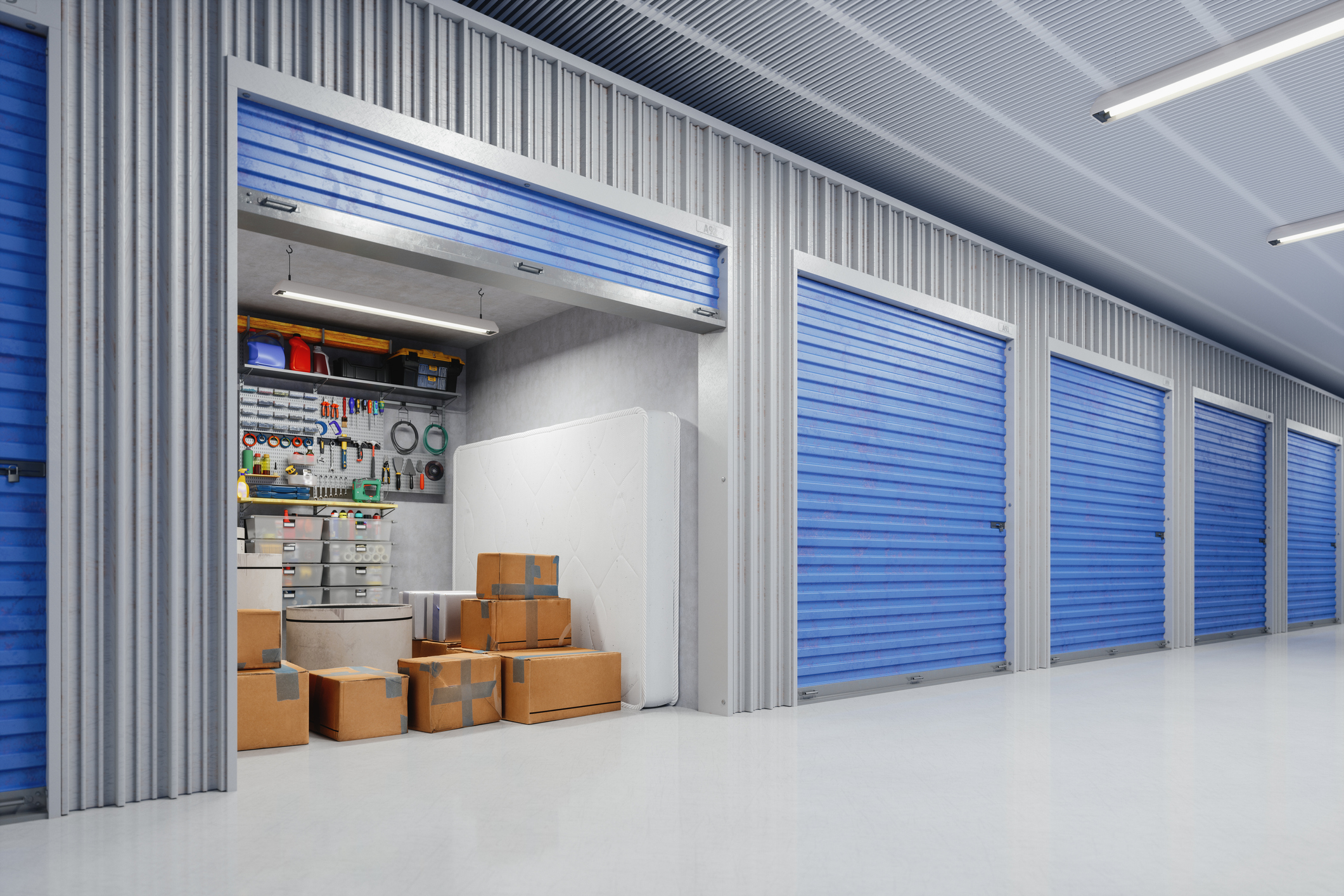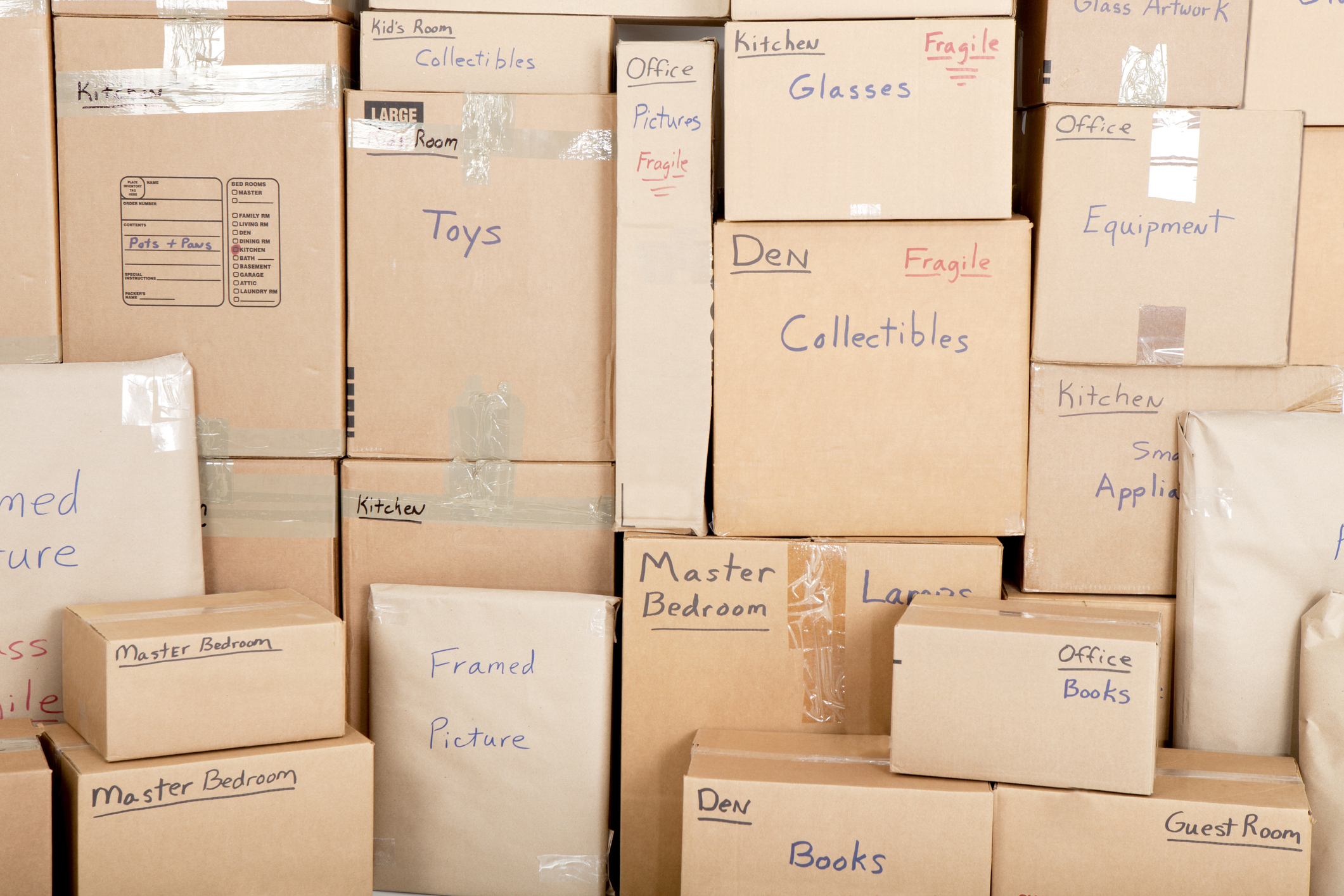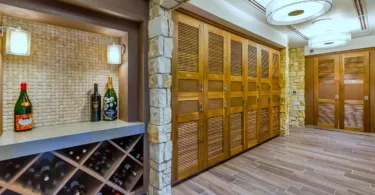Imagine you see a weather report calling for unseasonably freezing temperatures, only to realize that all of your cold-weather clothing is in storage. To make things worse, when you moved into your storage unit six months ago, you didn’t think to implement any type of organization system. (After all, you were pressed for time while moving to a new city!) With temperatures plummeting and the wind whipping, you make the trip to your nearby storage unit rental and start digging through boxes looking for your sweaters, coats, boots, and extra blankets.
Before you know it, a stack of boxes has tipped over, half of your belongings are outside of the storage unit, and you still haven’t found your boots for the trek home. At this point, you’re not only kicking yourself for not learning how to organize your storage unit when you had the chance. You’re also wondering if it’s better to call it quits and just buy new winter gear to get you through the storm. (And save what’s left of your sanity while you’re at it!)
How to Organize a Storage Unit: A Complete Guide
Have you ever found yourself in a similar situation? Storage units are meant to be as convenient and accessible as possible with some even offering 24/7 self storage access. So when you need to grab something you’ve stowed away for safekeeping, the last thing you want to do is spend time rifling through boxes and pulling everything out of the unit. (Especially if the weather is bad or the timing is inconvenient!)

Luckily, we’re here to help. A little bit of planning ahead to make sure your storage unit is organized can save you from a bunch of headaches later on. Here are nine simple tips to help set up and organize a storage unit so that you can easily find what you need during each visit.
Related: 12 Seasonal Storage Solutions Everyone Should Know
1. Stick to one box size for all of your packable items
It may be tempting to use whatever cardboard box you have lying around when packing up a storage unit. But same-size boxes help with stacking and accessibility. (So long as they’re properly labeled— more on that below!) Life Storage’s small or medium boxes will be perfect for most of your belongings. Along with clothing, accessories, books, documents, and other commonly stored items, they can even hold heftier items like small appliances and kitchenware!
Keep in mind large boxes are excellent for items that aren’t very heavy but may not hold up well at the bottom of large stacks. Large boxes (especially at the bottom of a stack) are also more difficult to remove if you need something out of them. On the other hand, keeping boxes similar in size means that you won’t end up with smaller boxes on the bottom of your stacks, either. Loading up your items on top of smaller boxes can lead to unstable (and unsafe) conditions.
2. Identify the items you may need to access while in storage.
A great way to organize belongings that don’t otherwise seem to have a theme: How often do you use each item? Things you don’t use regularly when you’re packing may be needed later on. But you definitely want to keep items you know you’ll need soon as accessible as possible. Carefully consider what you may need while your items are in storage, giving extra thought to seasonal items.
Here are a few things you may need to retrieve from your storage unit:
- Winter or summer clothing
- Trip supplies (tents, sleeping bags, snorkeling gear, sleds, cookout utensils)
- Holiday items (decorations, costumes, bakeware)
- Kids toys (kids may enjoy a “new” box of toys when they get bored of the toys they held onto when packing)
- Tools and hobby supplies
- Office documents
3. Label each box you pack.
Clearly label each box on the top and all four sides with short, simple identifiers. This can include a unique box number, the room it came from, and/or the box’s contents. (Just be sure that you’ll remember any labeling system you implement!) Place a special mark on boxes you may need to access at some point during storage, and remember to put them in your storage unit last. (That means closest to the door or on top of stacked boxes.) Be as detailed as possible with the contents to prevent headaches down the line.
Related: How to Organize and Store Travel Souvenirs
4. Create a master contents list.

Write down all of the contents of each box along with the box number on paper or in a digital spreadsheet. This seems like a cumbersome step, but a master list becomes really handy when you need to find a specific item, especially if some of your boxes will be completely out of view. (This can be a common occurrence in smaller storage unit sizes!) If you’re assigning unique box numbers, for example, you can easily cross-reference that number on your master spreadsheet to identify which box you need to access.
5. Plan an organized layout for your storage unit.
If you will access your unit frequently, you must think about how you pack your storage unit. Ideally, you want to put the furniture against the wall opposite your boxes to leave an accessible path in the middle of the unit. This way, you can access boxes and furniture items without any hassle. Leaving a clear path is also important for your own safety when accessing your storage unit, as it ensures you’re never pinned or trapped by stacks of boxes. If you need to use the space in the middle, place your most moveable items there so you can easily remove them. This could include very light items, furniture pieces on wheels, or items you’re only temporarily keeping in storage.
Pro Tip: It’s also a good idea to use some space to place something on the ground, like wooden or plastic pallets, to ensure your furniture, appliances, and especially boxes aren’t resting directly on the ground where they’re vulnerable to spills.
6. Consider upgrading to a larger unit.
Sure, you could pack every square inch like a Tetris master. But that means retrieving your items will be much more complicated than it needs to be. If you’re finding that your storage unit is packed to the brim, why not spring for some additional square footage? A little extra space can give you room for shelving units and a path through the middle of your unit for easy access to most of your belongings.
Obviously, you don’t want to pay for space you won’t use, but Life Storage’s Size Estimator should give you a good idea of how much space you will need.
Related: How to Pick the Best Storage Unit Size For Your Needs
7. Shelve or stack boxes.
If you’re using a self-storage unit as a long-term storage solution, it’s a good idea to place sturdy shelves along one wall of the unit. That way, you can guarantee that everything is safely stacked without risk of toppling over.
Storage Unit Packing Tips
Don’t have extra shelving in the budget? Only staying in your storage unit for a short period of time? You can safely stack your boxes by keeping these guidelines in mind:
- Stack from back to front in order of need. The boxes that you will access most frequently should be the last ones packed inside the storage unit. These should be placed near the door or on shelves with labels facing out.
- Put larger, heavier boxes down first, and then you can stack lighter ones on top. Be careful how high you stack. If boxes are stacked above your head, the whole stack is susceptible to falling, creating a hazard for you and anything breakable in the storage unit.
- Consider using a brick-wall pattern when stacking same-size boxes. It’ll seem somewhat inefficient, since you’ll have spaces on the ends of your stack, but the brick wall pattern allows you to remove and replace boxes without moving the boxes above it.
8. Place a map of your belongings inside the unit where you can see it.
There’s no need to map out visible boxes or items, but you should definitely be sure to notate anything that ends up getting buried. That way, you don’t lose track of where it is. (Or forget that it’s there entirely!) Your estimate doesn’t have to be perfect, either. A hand-drawn sketch will do just fine.
Divide your unit up into four or more sections and list the items and box numbers in each section on your map. If you happen to need a box or item that got buried in the back of the storage unit you can use your master contents list and map to find it without digging through boxes blindly.
9. Don’t be afraid to unpack all of your boxes.
If you’ve already packed and have many unlabeled boxes filled with whatever happened to fit conveniently, you might want to invest some time repacking. Sure, it’s a hassle, but taking some extra time now can save yourself a headache in the future. Repack similar items like seasonal clothes, holiday decor, or bakeware into their own boxes.
Packing items that fit within general categories is fine. You just don’t want to pack things like boots and coats with snorkeling gear, for example. Use your own judgment and pack in a way that makes sense for you. You’ll have an easier time forgiving yourself if you spend extra time to repack, label, and organize everything now than if you decide not to repack everything and need to tear your storage unit apart to find something simple like boots.

Related: 6 Essential Tips for Long-Term Storage Solutions
How do you maximize space in your storage unit?
These steps may take some time at first. (Especially if you already have everything packed in boxes!) Buthey are well worth your effort. You will save yourself a lot of time and energy in the future, which would otherwise be spent sifting through unmarked, disorganized boxes.
Have you used any of these tips to organize a storage unit? What are the must-know organizational hacks you live by? Feel free to share with us on social media!
Updated on 12/7/16 & 7/17/23. Originally published on 1/2/13.







